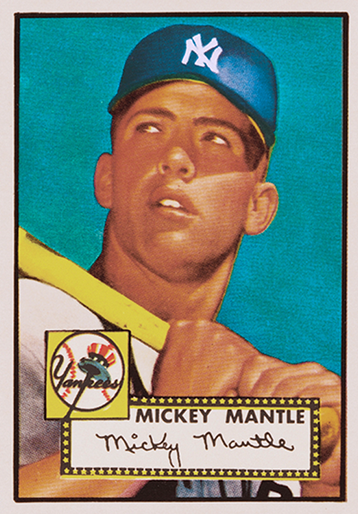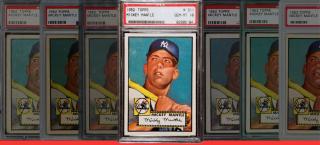
Story
Mickey Masterpiece
A 1952 Topps Mickey Mantle is the Holy Grail of Baseball Cards
There’s a wonderful pop art quality to the card. Mickey Mantle stands in a heroic pose against a brilliant sky blue background, shouldering his bat as he gazes up into the distance. It’s the sort of iconic portrait an artist might have created to celebrate Mantle’s spectacular achievements in retrospect, but somehow Topps got it exactly right at the beginning. And for three days in Denver this July 10–12, you can see it for yourself.
Editor’s Note: History Colorado is partnering with the Colorado Rockies Baseball Club Foundation to bring Hall of Legends, an exhibition showcasing some of the game’s all-time all-stars, to baseball fans during All-Star Week. Drawing from the Marshall Fogel Collection, one of the greatest private collections of baseball artifacts ever assembled, visitors will encounter some of baseball’s greatest players through the tools of their trade: the bats they swung, the gloves they wielded, the uniforms they wore, the game balls that marked their greatest achievements. And, from July 10–12, the Holy Grail of baseball cards.
It’s been called the Mona Lisa of baseball cards. The Chairman of the Cardboard. The Holy Grail of sports memorabilia. And during the All-Star festivities in Denver this July, the “Gem Mint 10” 1952 Topps Mickey Mantle—the most sought-after card in the world—will be on public view in the Rockies’ Hall of Legends at the new McGregor Square across from Coors Field, offering fans a once-in-a-lifetime look at the crown jewel of baseball cards.
The card, which is on loan from the renowned collection of Marshall Fogel, will be transported to the Hall of Legends by armored car with a security escort, travel arrangements befitting a masterwork. Back in 1952, however, there was nothing to hint at the iconic status the card would obtain. Quite the opposite, in fact. In the ensuing seven decades, the legend of the 1952 Topps Mickey Mantle card has been shaped, like many great destinies, as much by fortune and chance as it was by the tremendous talent of the ballplayer himself.
Hailed as the successor to Joe DiMaggio, Mantle made his debut with the Yankees in 1951. He would go on to justify the comparison. A switch-hitting center fielder who hit towering home runs from both sides of the plate, Mantle led the Yankees into a new era of dominance in the 1950s and ’60s. With Mantle in the lineup, the Bronx Bombers appeared in the World Series twelve times, winning seven championships.
Mantle was so dominant in postseason play that he still holds the records for most home runs and most runs batted in during the World Series. The 1956 season was arguably his best. That year Mantle won the Triple Crown—leading all of baseball in batting average, home runs, and runs batted in—and his first of three MVP awards as the Yankees beat the Brooklyn Dodgers in the World Series. After a career that included 20 All-Star games, Mantle was elected to the Hall of Fame in 1974.
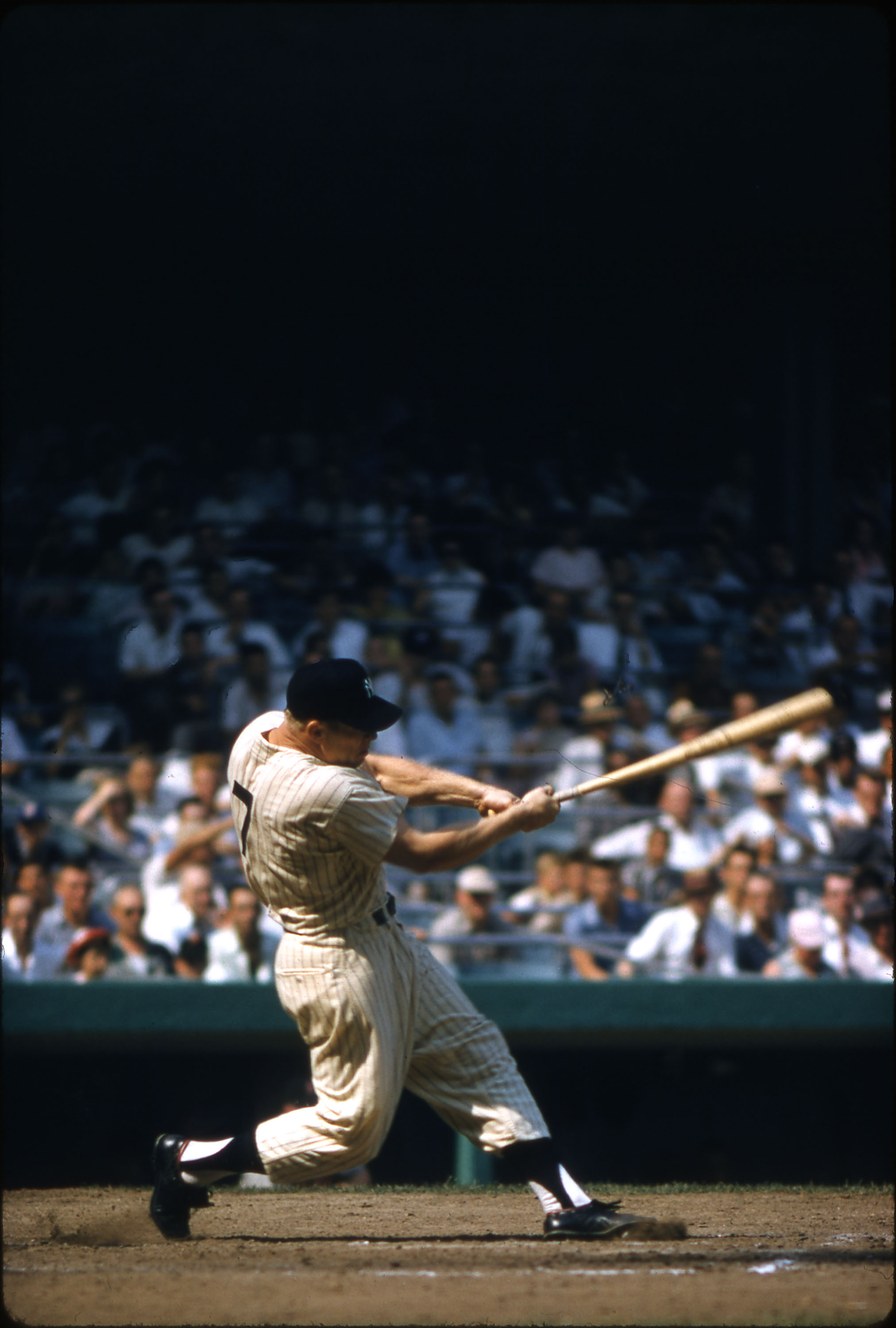
Fellow players said Mantle’s swing was so powerful that the bat had a different sound from anyone else when he connected for a home run.
Like children throughout the country in the 1950s, the card’s owner, Marshall Fogel, grew up idolizing Mantle. “He was the consummate player,” explains the retired attorney. “He was the greatest modern day player of all time. A great fielder, a switch hitter, and you could just tell from the crack of the bat, you knew that was a home run. The way it sounded, it was so powerful.” But no matter how many cards he bought (a penny a card, or a pack of six for a nickel, plus gum!), he couldn’t get his hands on one during the 1952 season.
It turns out it wasn’t his fault.
Trying to spur interest later in the season, Topps had printed the Mantle card as part of a later “high series” addition to the 1952 set. Although the card company had held back stars like Mantle, Jackie Robinson, and Willie Mays for the later issue, by the time it was released, buyers’ (aka, kids’) attention had turned to other things and Topps had difficulty selling the set. Boxes of unsold cards sat in the company’s warehouse in Brooklyn for years until, needing room for new stock, they were loaded onto a garbage barge and dumped into the Atlantic Ocean off the coast of New Jersey.
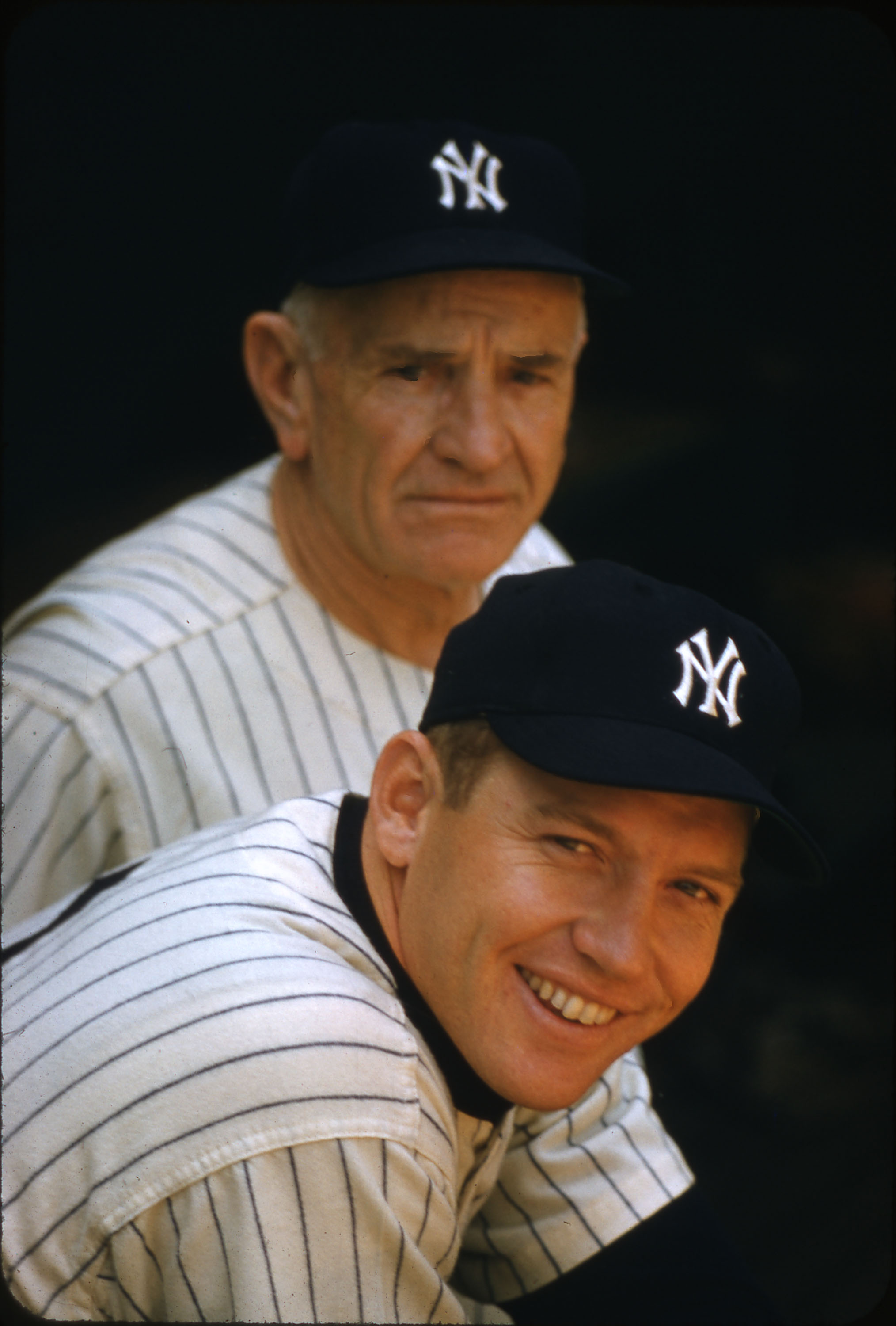
A brilliant smile and easy charm added to Mantle’s appeal.
Several decades after that fateful trip into the Atlantic, Marshall Fogel was looking to rectify his childhood disappointment. This time, in addition to the type of admiration that is reserved only for childhood heroes, he brought a savvy collector’s eye to the pursuit. “I always knew the Mantle card was going to be the king of cards,” he says. “But getting the right one, the best of the best, was fortunate for me. That was luck. Because I never knew when I bought it if there were ten others like it. But it turns out there’s not anything like it.”
There’s a wonderful pop art quality to the card. Mantle stands in a heroic pose against a brilliant sky blue background, shouldering his bat as he gazes up into the distance. It’s the sort of iconic portrait an artist might have created to celebrate Mantle’s spectacular achievements in retrospect, but somehow Topps got it exactly right at the beginning.
The vibrancy, clarity, and nearly perfect condition of this Mickey Mantle card earned it a rating of “Gem Mint 10” from the card-grading company Professional Sports Authenticator (PSA), the primary arbiter of quality in the sports card market. Of the three known examples rated 10 by PSA, the man who has appraised them all says Fogel’s Mantle is the best of the best. Mike Baker, the founding director of grading at PSA who now runs his own high-end authentication and appraisal company, explains that “I have personally graded all six PSA 9s and all three PSA 10s and can attest that this copy stands out as the premier exemplar with spectacular color and registry, exhibiting perfect centering and pristine corners….This 1952 Topps Mickey Mantle is truly ‘The Holy Grail.’”
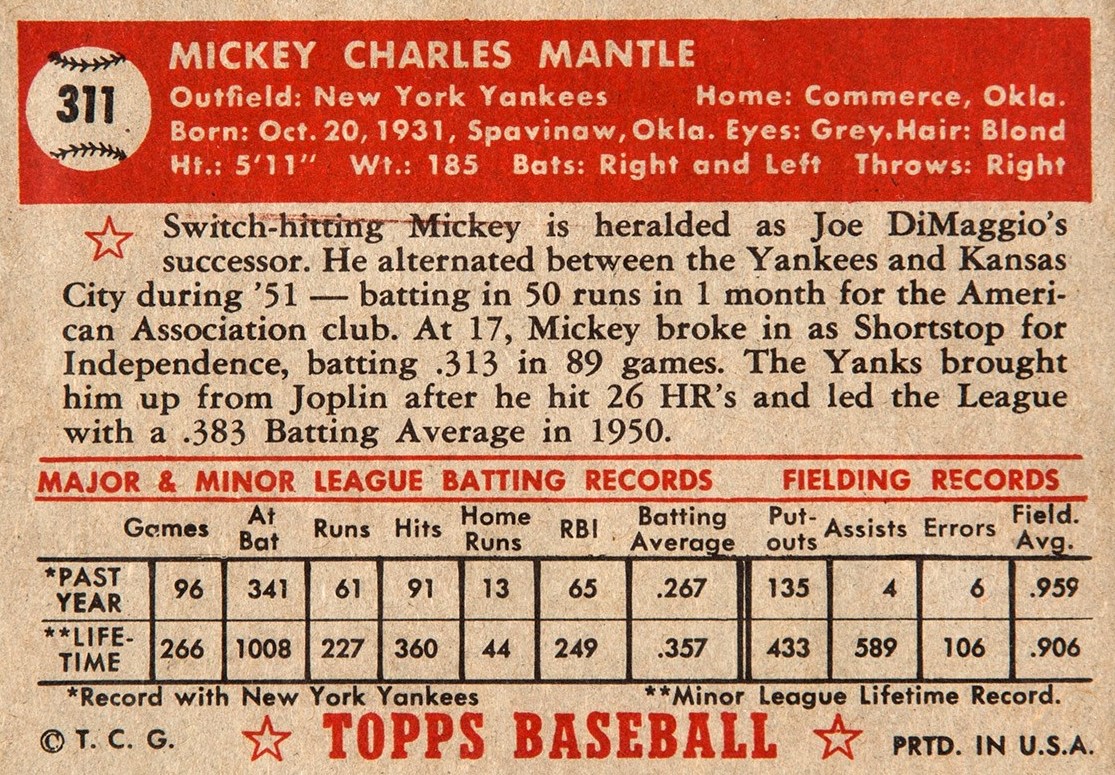
1952 Topps Mickey Mantle Gem-Mint 10 Baseball Card (back).
Today, nearly seventy years later, the card’s vivid colors, clean lines, crisp edges, and heroic depiction, even the star-lined marquee with Mantle’s signature, bring the viewer back in time to one of the game's golden eras. The chance to see the authentic, most perfect example of it, is—like viewing any great work of art—an opportunity for visitors to be emotionally transported. And for three days in Denver this July 10–12, you can see it for yourself.
“No other Mantle card is like this one,” Fogel says simply when asked to sum up what makes it so special. “That’s why it’s called ‘The Holy Grail.’”
More from The Colorado Magazine
Once Trash, Now Treasure: The Story Behind the 1952 Topps Mickey Mantle Card How the 1952 Topps Mickey Mantle ended up swimming with the fishes.
“The Little World Series of the West”: Integrating Baseball in Denver Black baseball players shaped the game and American society beyond the ballfield. It’s a story that runs, surprisingly, straight through Denver and an event that called itself “The Little World Series of the West.”
Left on the Field: Colorado’s Semi-Pro and Amateur Baseball Teams When towns and companies fielded teams, the stakes were never higher nor the competition fiercer.

